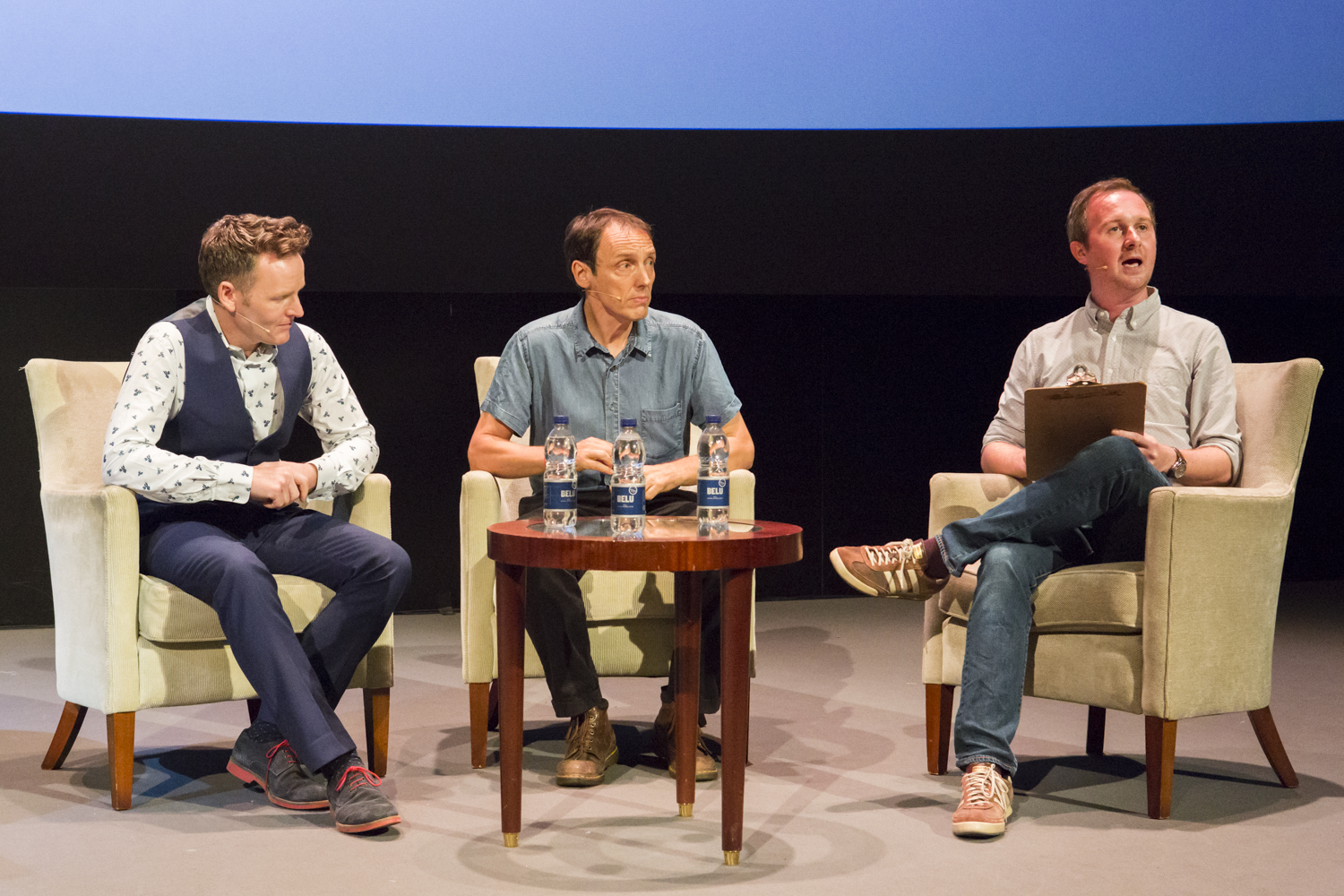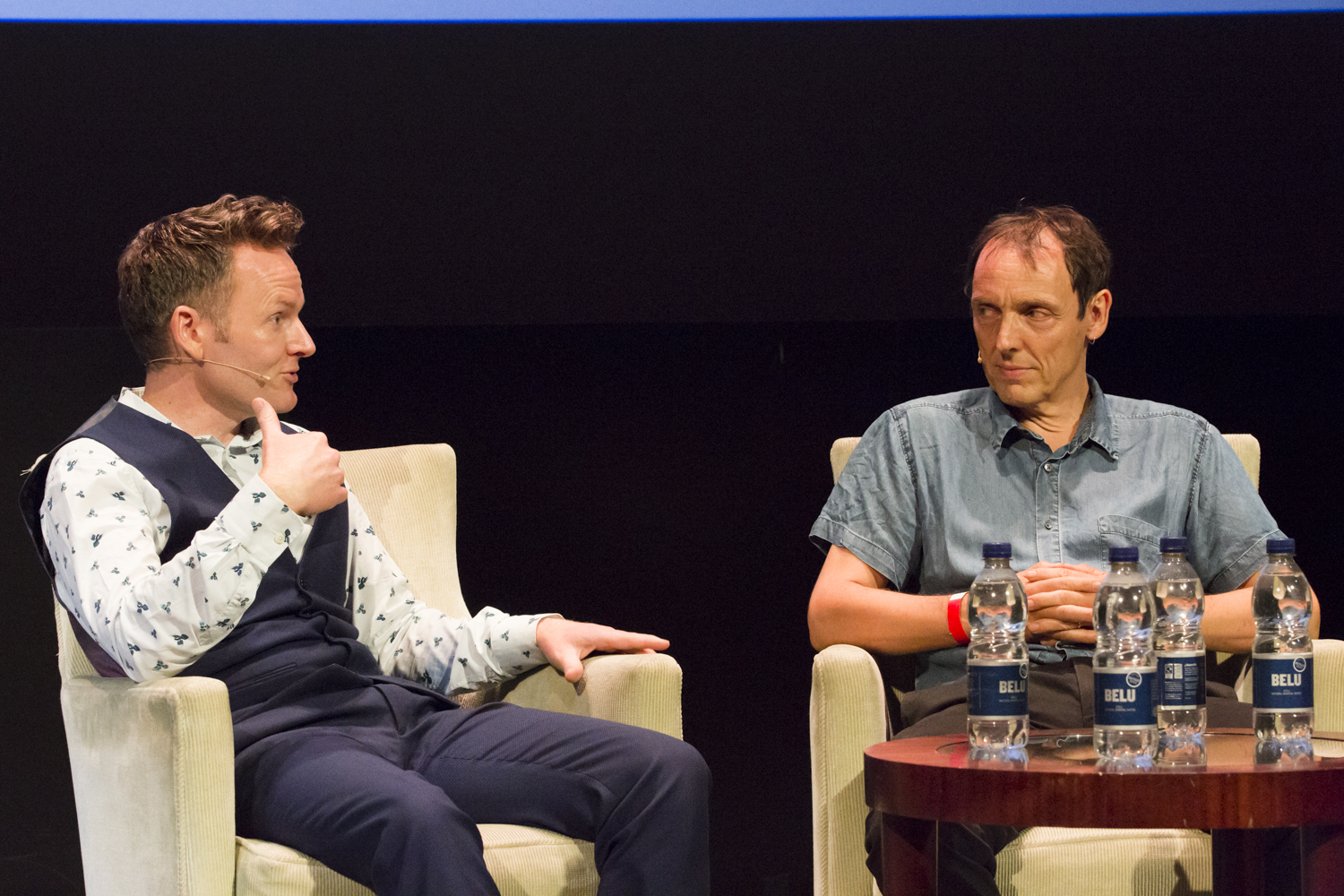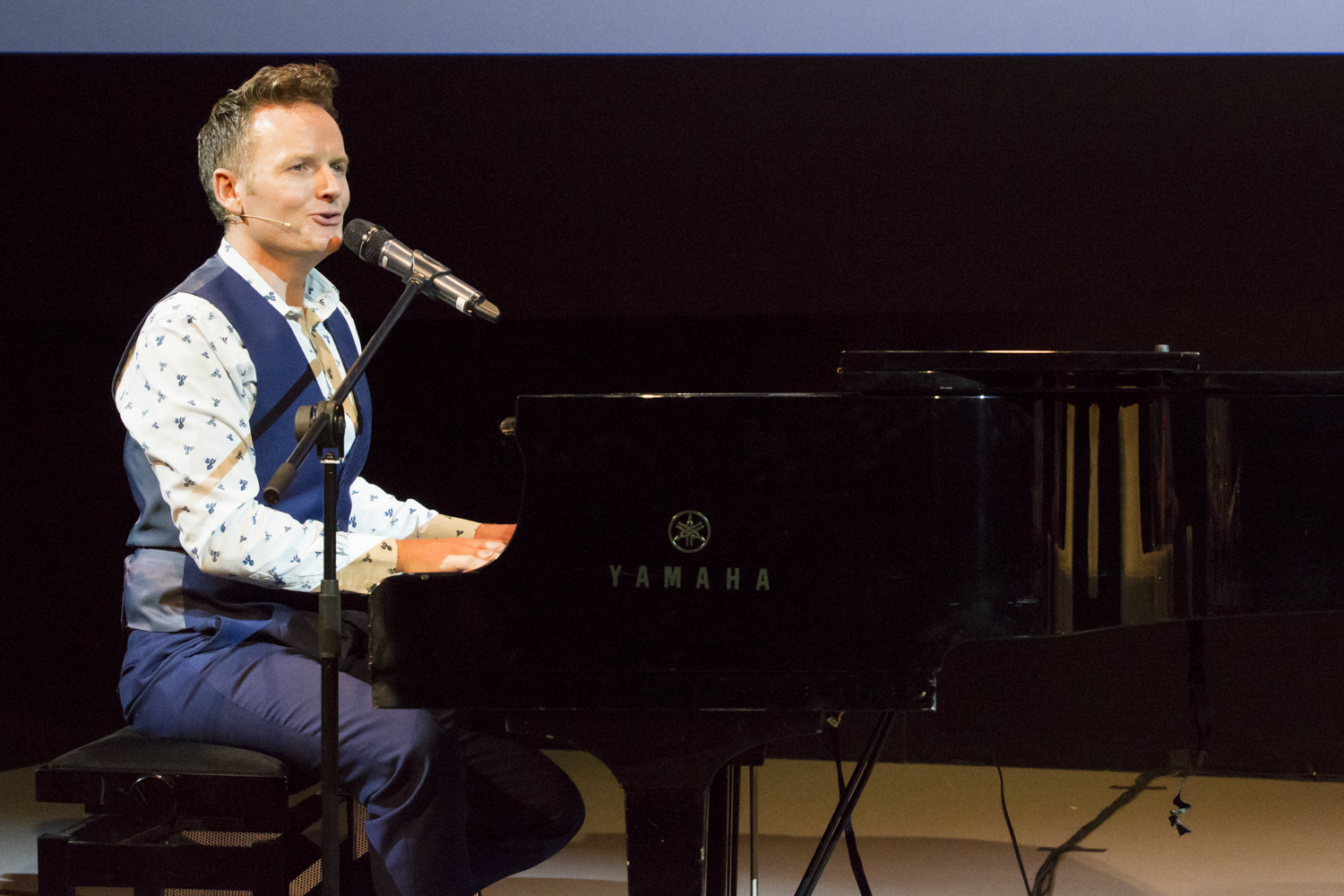The Grandstand theme tune, played in the eclectic style of Prince, was one of the stranger compositions mashed up at the bidding of the museum’s IMAX audience by Joe Stilgoe at a recent event to explore the science of music and mood with Philip Ball, author of The Music Instinct.
Listen here:

Earlier that evening in the IMAX the acclaimed singer, pianist and songwriter had – following the suggestions of the audience – created a birthday medley to celebrate the 40th of Louise Brown, the first IVF baby.
Stilgoe declared at the start of the encounter with Ball that he was happy to come to the museum both to impress his scientist brother, Jack Stilgoe, and ‘to claw back my double C in combined science at GCSE’.
Ball, on the other hand, was keen to both explore the science of music and marvel at Joe Stilgoe’s technical prowess: ‘I still don’t quite get how Joe fits the entire encyclopaedia of music into his mind’.
To set the scene for the evening of improvised insights, MCed by the museum’s own Jon Milton, Ball wrote a blog and began the night by describing the remarkable human capacity to rapidly make sense of music and respond with emotions.
‘It is an extraordinary complex acoustic signal,’ he said. Even so, within a quarter of a second, people are able to discern a song along with its genre: ‘We are all musical’.
Every human culture enjoys music, and there are many theories to explain why. Some say that it creates a sense of community, while the Harvard Professor of Psychology Steven Pinker dismisses music as little more than ‘auditory cheesecake’.

But, though controversial, many suspect that there is an evolutionary explanation. Charles Darwin thought music was to do with sexual selection: ‘Look at me and how big my guitar is,’ joked Ball.
Perhaps music taps into the pattern-seeking mental machinery in the brain that says ‘If I hear the call of a sabre tooth tiger, I ought to get going’ he said, though he added that brain scan studies suggest it involves the reward circuits activated by food, sex and drugs. ‘You are getting a high from the music.’
Drawing on the suggestions from the audience, Ball and Stilgoe explored what made a happy song uplifting, the science of sad songs, the art of improvisation and then, as a grand finale, experimented with how to make a happy dirge.
In the first improvisation session, Stilgoe created a mash up of three ‘happy’ songs suggested by the audience: Nina Simone’s Feeling Good, Stevie Wonder’s Sir Duke and Gene Kelly’s Singin’ in the Rain.
Listen here:
Why are they perceived as happy? Stilgoe said nostalgia was one factor when, for example, it comes to Singin’ in the Rain. Ball added that, as one 1930s psychologist remarked, music sounds like emotions feel. Or ‘music is the shorthand of emotion,’ as Leo Tolstoy famously put it.
The way music maps onto emotion can be quite literal. The octave jump in Singin’ in the Rain ‘mimics, in the shape of music, the emotion we want to invoke,’ said Ball, adding that the same tonal leap can be heard in the uplifting ballad, Over the Rainbow.
Both agreed that timbre is a factor, with Ball adding that it must be ‘sharp and cutting’ to be upbeat.
When it came to the sad songs, the audience suggestions selected by Joe Stilgoe were Yesterday by the Beatles, Why Does it Always Rain on Me? by Travis, along with Arthur Hamilton’s Cry Me a River.
Listen here:
We are drawn to sad songs and the reason why is a fundamental question, said Ball. ‘One possibility is that it is cathartic,’ he said. A dirge ‘allows us to explore that emotion without having anything tragic associated with it.’
What he found fascinating was that ‘we are powerless’ to resist the emotional tug of sad music, even when – as is often the case in Hollywood movies – it is transparently manipulative and toe-curlingly sentimental.
‘Music,’ said Ball, ‘bypasses the rational brain.’
Some have wondered if it is possible to craft a perfectly happy or sad song. In a BBC4 programme, The Secret Science Of Pop, Prof Armand Leroi, an evolutionary biologist from Imperial College London, analysed the data from 17,000 chart toppers and then — with the help of Trevor Horn and singer-songwriter Niké Jemiyo — attempted to manufacture the perfect pop hit.
Though many insights emerged, the experiment did not work, said Philip Ball. ‘There is something ineffable about music that seems to resist that kind of analysis.’ Many hits rely on surprise, on adding something new, he said. ‘We can science it as much as we like, we can’t get to the bottom of it.’
And even though different cultures are ‘pretty good’ at working out the mood of other culture’s music, said Ball, we often make assumptions about the mood of minor and major scales, so cultural conditioning also plays a role.

Guided by Milton, they turned to the science of improvisation itself. Given the physical constraints of getting inside a MRI scanner, there have been few studies of brain activity while playing an instrument but those that have been done have provided insights.
As Geoff Goodhill of the University of Queensland has explained, improvisation draws on two key neural circuits – the default network, which is most active when the mind is wandering, and the executive control network, which becomes more active when focused on a task.
In jazz improvisation, the default network likely allows the musician to riff around a basic structure laid down by executive control.
At the end of the evening, Jon Milton challenged his guests to turn a dirge into a storming finale. The first attempt saw Stilgoe play the audience suggestion of Harry Nilsson’s Without You in the style of Chas & Dave, Ball’s wildly inappropriate suggestion.
Listen here:
Radiohead’s Creep, first in the style of the jazz pianist Thelonious Monk, then Brazil’s Bossa nova, brought the evening to an impressively offbeat end.
If the hour of seemingly effortless improvisation proved anything at all about the science of music, and the inclinations of our pattern-hungry brains, it was that we do indeed all love music for the sake of sheer enjoyment.